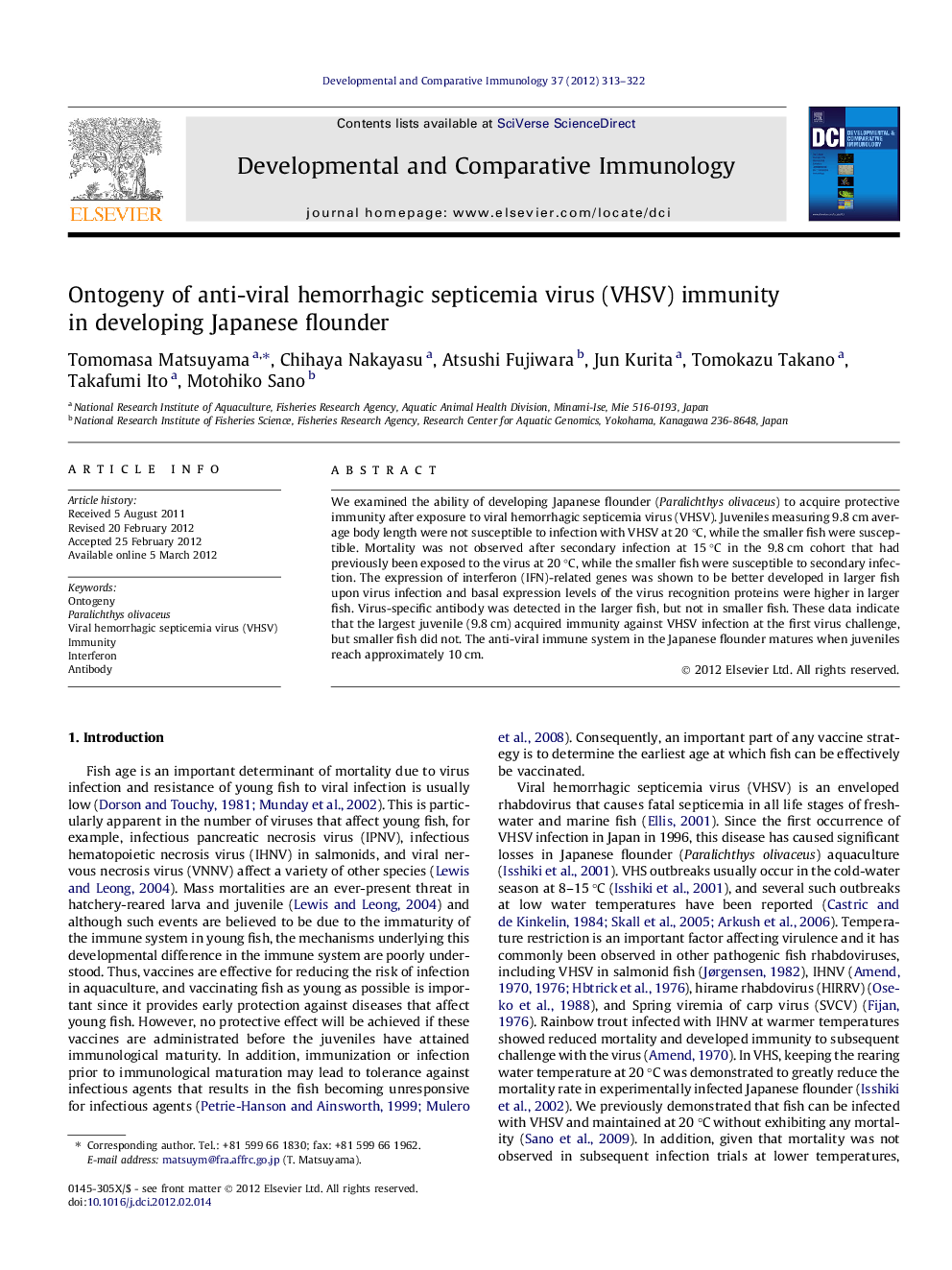| Article ID | Journal | Published Year | Pages | File Type |
|---|---|---|---|---|
| 2429567 | Developmental & Comparative Immunology | 2012 | 10 Pages |
We examined the ability of developing Japanese flounder (Paralichthys olivaceus) to acquire protective immunity after exposure to viral hemorrhagic septicemia virus (VHSV). Juveniles measuring 9.8 cm average body length were not susceptible to infection with VHSV at 20 °C, while the smaller fish were susceptible. Mortality was not observed after secondary infection at 15 °C in the 9.8 cm cohort that had previously been exposed to the virus at 20 °C, while the smaller fish were susceptible to secondary infection. The expression of interferon (IFN)-related genes was shown to be better developed in larger fish upon virus infection and basal expression levels of the virus recognition proteins were higher in larger fish. Virus-specific antibody was detected in the larger fish, but not in smaller fish. These data indicate that the largest juvenile (9.8 cm) acquired immunity against VHSV infection at the first virus challenge, but smaller fish did not. The anti-viral immune system in the Japanese flounder matures when juveniles reach approximately 10 cm.
► The ontogeny of protective immunity against VHSV was examined in the flounder. ► Larger fish acquired protective immunity, but smaller fish did not. ► Interferon-related gene expression upon virus infection was lower in smaller fish. ► Basal gene expression levels of virus recognition proteins were lower in smaller fish. ► This may be correlated with higher virus susceptibility in smaller fish.
